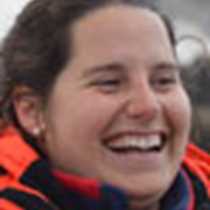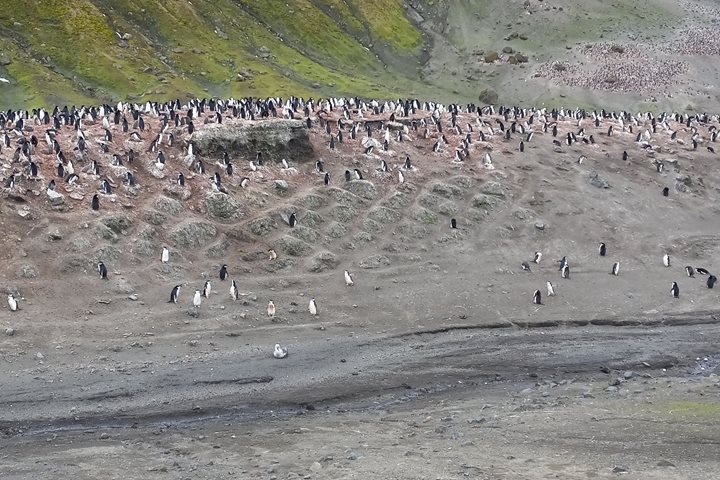The first landing of our voyage was incredible. We started our morning at Pourquoi Pas, a mountainous island, 27 km long and about 13 km wide, where Adelie penguins, skuas, and colourful lichens awaited us. Discovered by the French Antarctic Expedition under Charcot (1908–10), this island was charted more accurately by the Belgian expedition under Rymill (1934-37) who named it for Charcot's expedition ship, the Pourquoi-Pas? (“Why not?”)
Marguerite Bay is an extensive bay on the west side of the Antarctic Peninsula, which is bound on the north by Adelaide Island and on the south by Wordie Ice Shelf, George VI Sound, and Alexander Island. During the afternoon, we explored the inside of this bay looking for fast ice for a possible Ice walk. We sailed passed Nemo Cove, Nautilus Head, and Ridge Island. Right after lunch, the great news came over the PA system: “We found the perfect spot!” Approaching the ice, we could already sea dozens of seals on this vast frozen sea water fastened to the shore, hence “fast ice.” The National Geographic Resolution approached the ice in the most gentle and smooth way—and without even feeling a bump, there we were, surrounded by ice. It was unbelievable. Our penguin doors at the bow of the ship opened, and we got to explore this immense ice landscape surrounded by high peaks of mountains and magnificent glaciers.
We had great fun photographing the ship parked on ice and walking as far as the eye could see. We even got to admire Weddell and crabeaters seals resting on ice. The crabeater seal is by far the most common pinniped and possibly the most abundant large mammal in the world. They actually do not eat crabs. Instead, they feed almost exclusively on Antarctic krill. The Weddell seal is the only mammal to remain in Antarctica through the winter. It is the most southerly breeding of all mammals, and one of the best-known Antarctic seal species. They feed mainly on fish, including the large Antarctic cod, as well as squid, octopus, and crustaceans. When hauling out, they remain close to their access hole on top of the ice. We were very lucky to see a seal poking its snout in and out of the hole.
The day ended with dramatic clouds around the mountain peaks contrasting with bright sun light. For the second day in our expedition, the sun will not set once again.







